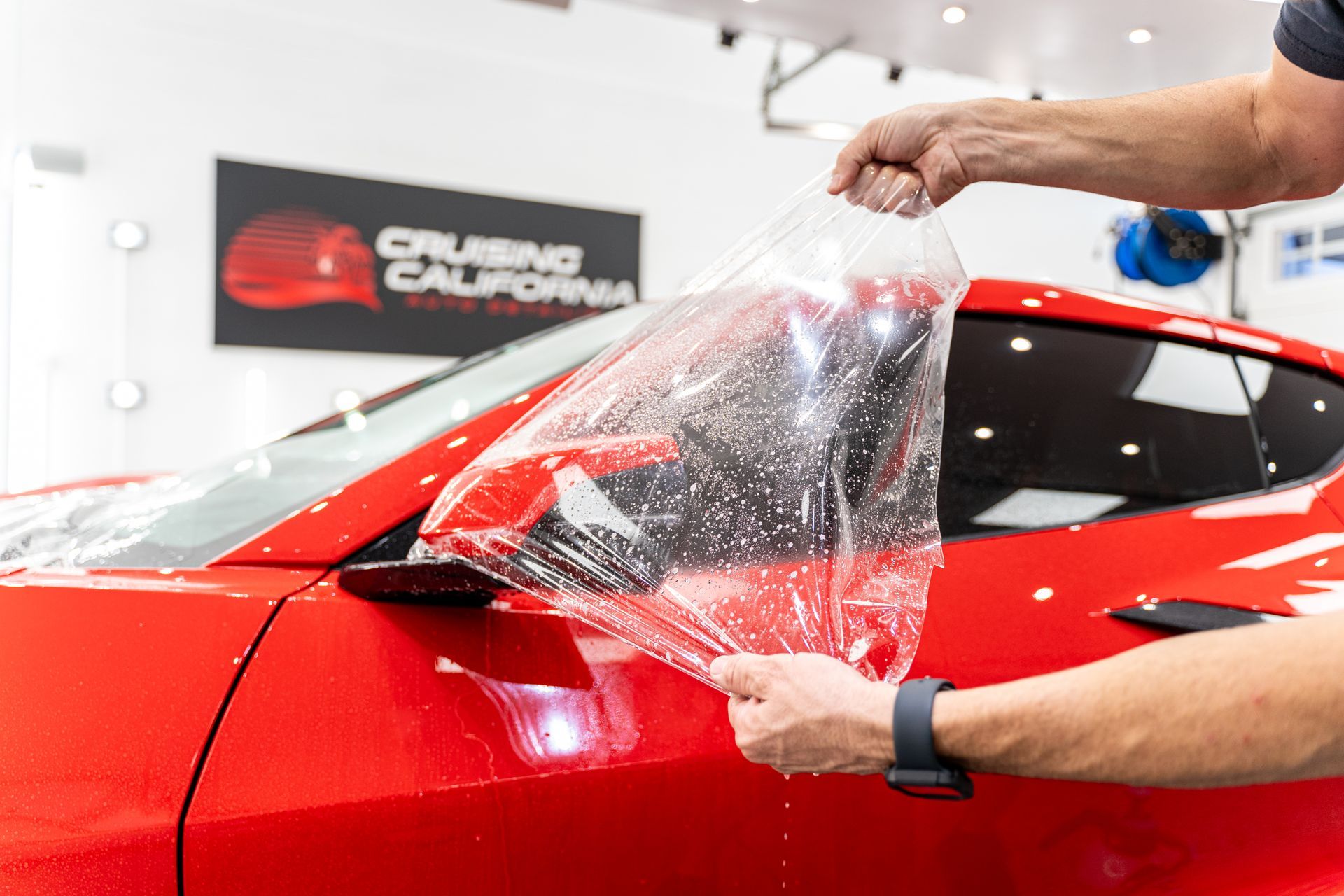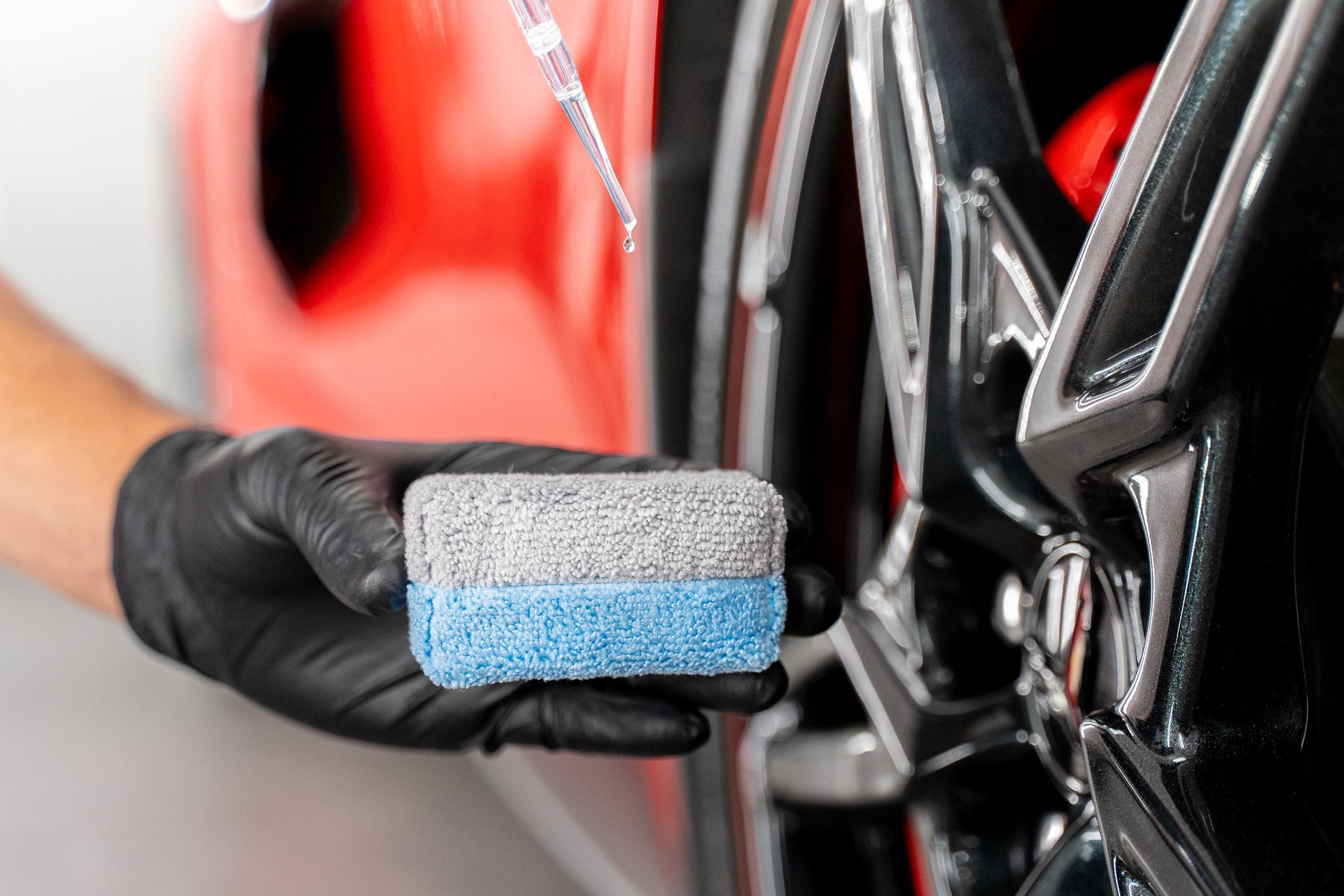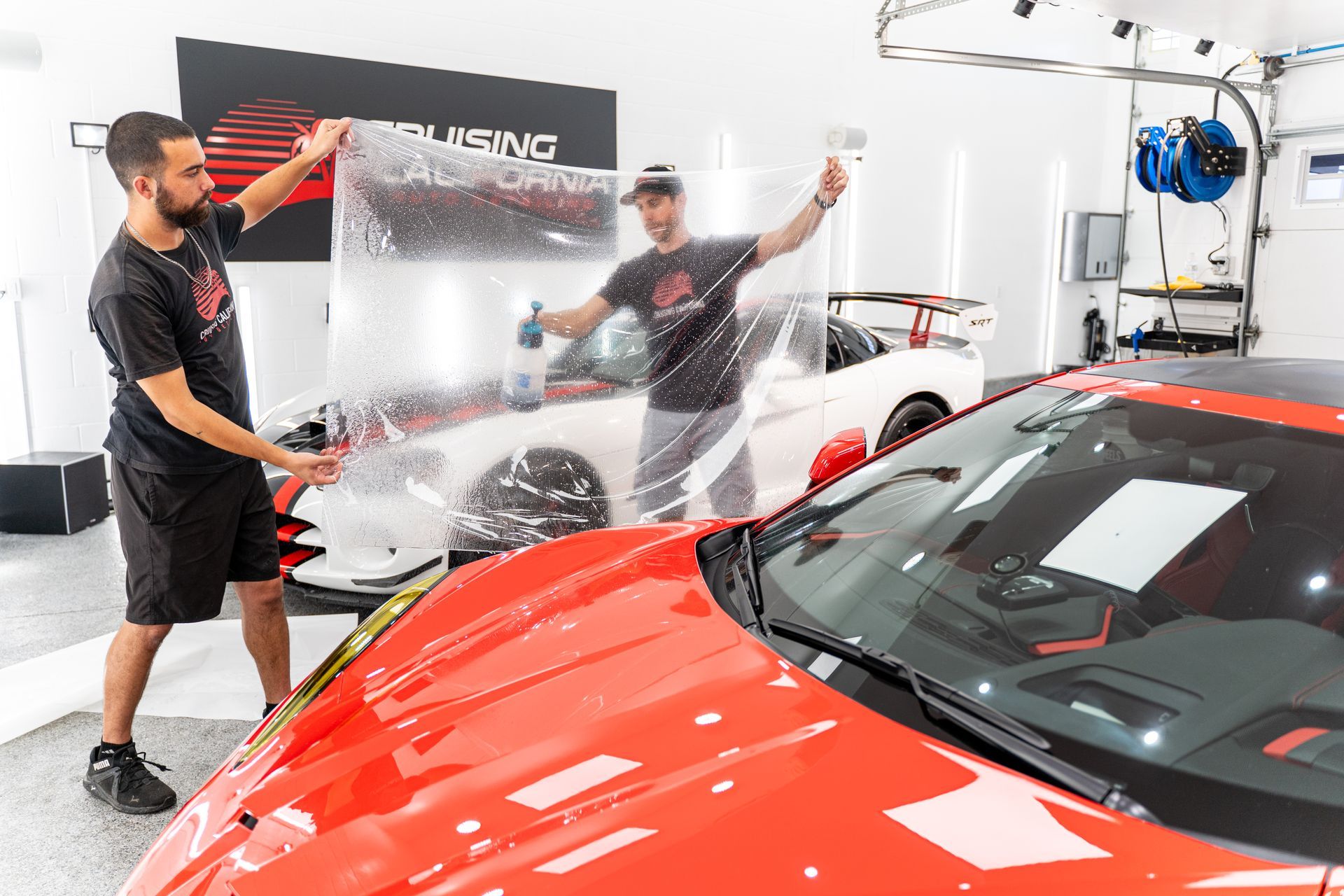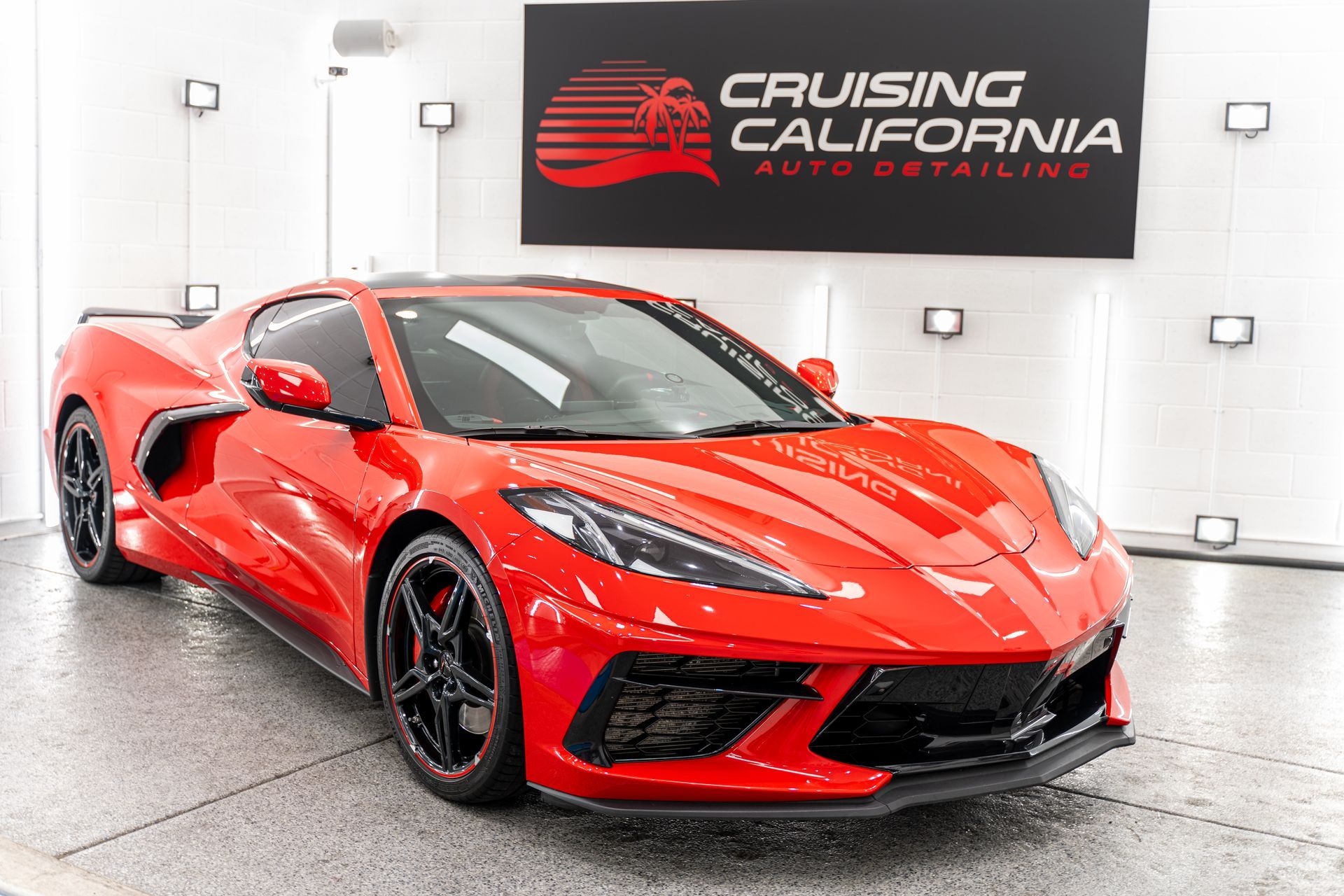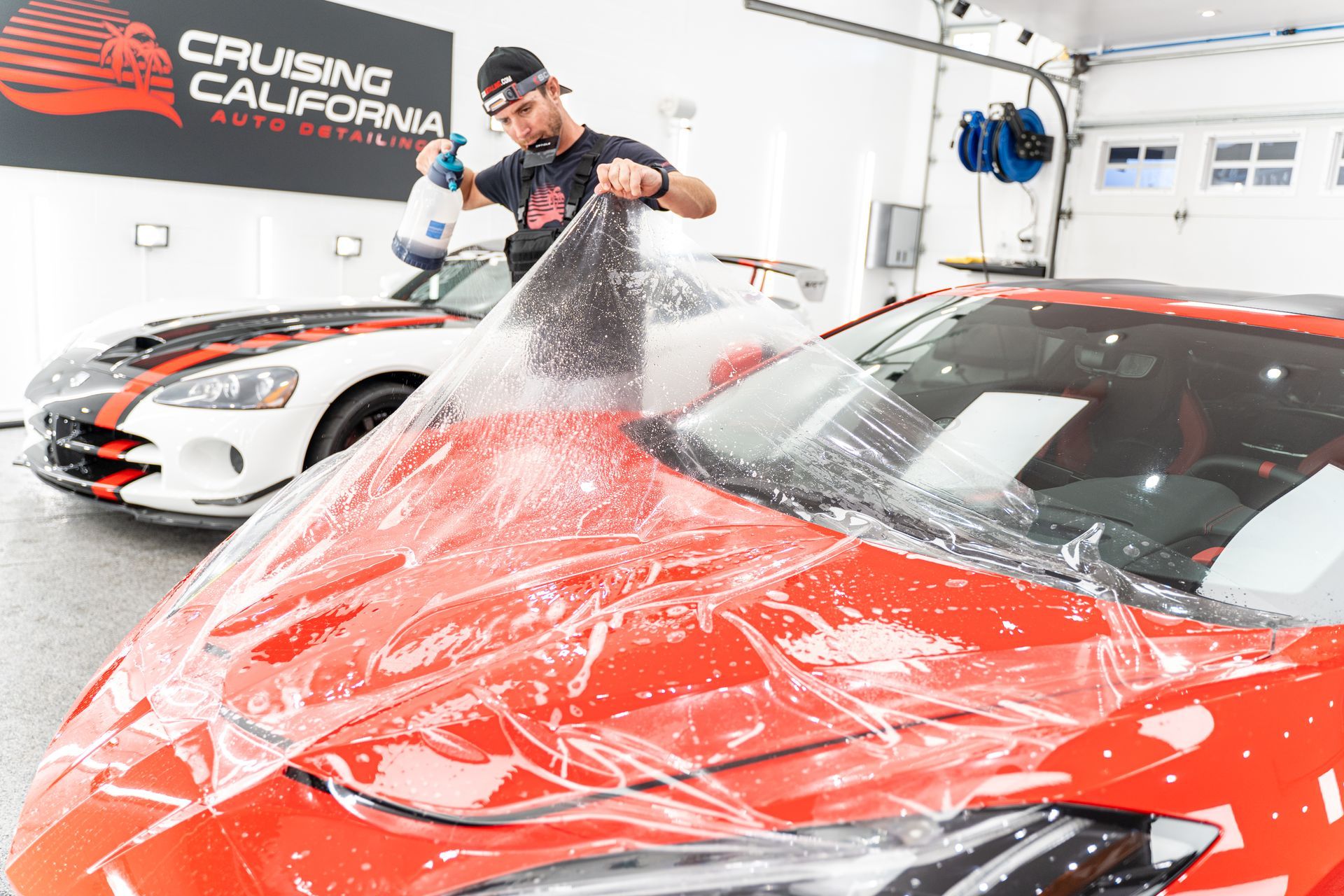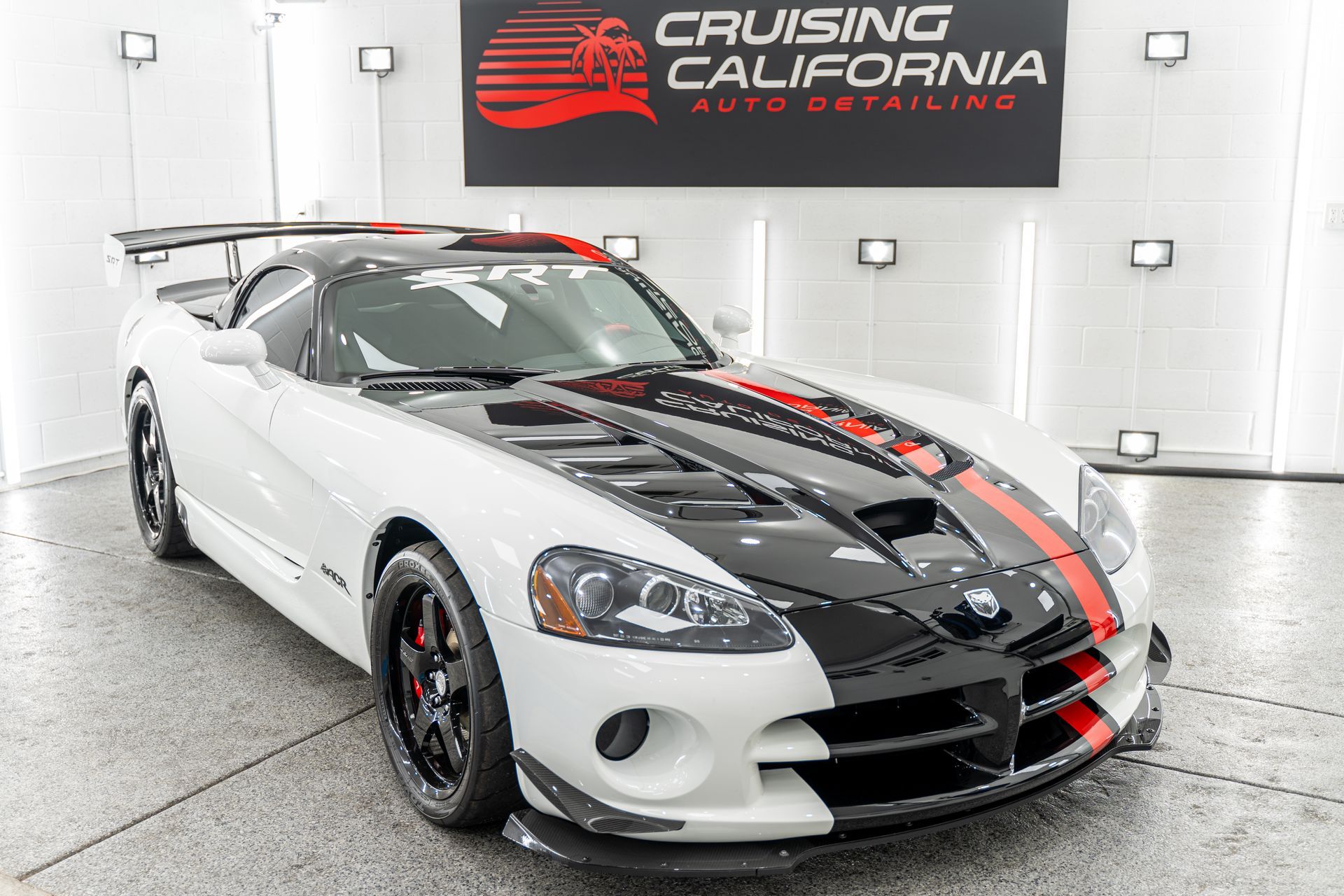When winter rolls around, many vehicle owners start to worry about how the snow, ice, and road salt will impact their car's appearance and integrity. It’s a real concern since harsh weather can lead to rust and damage that might not be visible until it’s too late. But what if I told you there’s a way to protect your paint job and make winter maintenance easier? Enter ceramic coatings—a game changer for keeping your vehicle safe and clean during those chilly months. In this article, we'll dive deep into how ceramic coatings work, why they’re essential for winter protection, and how you can conquer the cold without breaking a sweat over your vehicle care.
Ceramic coatings shield vehicles from harsh winters by creating a durable, hydrophobic layer that repels water and protects against road salt, de-icing chemicals, and other environmental hazards. This protective barrier not only prevents damage to the vehicle's paint but also simplifies maintenance by making it easier to wash off grime and snow accumulation.
The Science Behind Ceramic Coatings
At its core, ceramic coatings represent a sophisticated blend of science and technology, harnessing the power of nanotechnology to create a remarkable protective layer for vehicles. These coatings primarily consist of silicon dioxide (SiO₂), a robust compound found in nature that forms the basis of glass. By combining SiO2 with titanium dioxide (TiO2) and other compounds, these coatings enhance durability and resistance against environmental elements, particularly harsh winter conditions. This multi-faceted approach results in both protection and longevity, making your vehicle’s finish last longer than conventional waxes or sealants.
When the coating is applied, the particles undergo a unique bonding process at a molecular level. They fill in the microscopic pores and crevices found on automotive paint surfaces. As these particles bond tightly, they create what I like to refer to as an "invisible armor." This armor changes the surface chemistry of the paint itself, resulting in a hydrophobic effect. The water literally beads up and rolls off, taking with it dirt, grime, and other contaminants that would typically adhere to surfaces. This hydrophobic characteristic keeps the vehicle cleaner and reduces the frequency of washes required.
Imagine if your vehicle's surface was like a well-prepped non-stick pan—nothing wants to stick! Furthermore, this change in surface chemistry makes it much harder for any debris to latch onto your vehicle. Just like how rainwater forms droplets on a freshly polished car hood rather than drenching it, ceramic coatings defy typical wear-and-tear mechanisms. They provide a slimy yet secure layer that protects against fading from UV rays, road salts in winter, and even acid rain.
One significant result of this technology is the extended lifespan of your vehicle's exterior. By incorporating innovative practices such as zirconium pre-treatments, Lincoln Industries enhances coating adhesion and longevity—a game-changer for winter vehicle protection. Over time, you're not just safeguarding aesthetics; you’re preserving your car’s resale value as paint degradation becomes less of a concern.
As we move forward from this scientific understanding, it's essential to explore how these coatings physically form that vital shield around your vehicle to fend off the elements effectively.
Forming a Protective Barrier
When we talk about ceramic coatings, it’s almost as if we're discussing a superhero cape for your vehicle, providing it with an impressive protective barrier against a myriad of environmental threats. These coatings create a semi-permanent layer that chemically bonds to your vehicle's paint, establishing a shield that defends against various forms of damage.
Let's break down how this magic happens and what exactly it protects against. Ceramic coatings are composed of liquid polymers that form a strong molecular bond upon application. This creates a hydrophobic surface, which means that water and grime simply roll off rather than stick to the paint. It's not just about aesthetics; this hydrophobic quality significantly reduces the need for frequent cleanings, saving time and effort throughout those long winter months when road salt and grime can build up rapidly.
A fantastic tip: Always ensure your car's surface is thoroughly cleaned and polished before applying the ceramic coating. Any remaining dirt or contaminants can interfere with the bonding process and diminish its effectiveness. Moreover, studies indicate vehicles treated with ceramic coatings can maintain their gloss and resist oxidation approximately 50% longer compared to untreated cars. Just think about what that means for your investment: by safeguarding the original paint job, you're simultaneously preserving the overall value of your vehicle—an important consideration in today’s market.
With frequent winter threats, such as falling branches or ice scrapers scraping against surfaces, ceramic coatings also help establish protection on more unexpected fronts. They effectively absorb minor impacts and combat chemical etching caused by road salt and de-icing agents. Imagine driving through slushy streets without worrying about unseen damage; that's the confidence that comes with having a robust ceramic layer enveloping your car's finish.
Picture this: you’re on your way to work after it snowed, only to find out that someone else’s ice scraper left its mark on your pristine hood. With ceramic coatings, you'd have peace of mind knowing that your vehicle stands resilient against such mishaps. As we continue to explore protective measures, it's essential to understand how these coatings function specifically against ice and snow accumulation during those frostier months.
Shielding from Snow and Ice
Picture the layer of snow barely sticking to your car’s surface, much like water beading off a duck’s back. This is not just a whimsical comparison; it’s a testament to the hydrophobic properties present in ceramic coatings. These specialized coatings create a barrier that actively repels water, making it difficult for snow to cling to the surface of your vehicle.
As a result, when winter hits, you’ll find that snow slides off easily rather than accumulating into thick layers that require strenuous shoveling or scraping. The remarkable hydrophobic nature ensures that not only does snow easily slide off, but it also prevents water from turning into ice on your vehicle’s surface. This is crucial during fluctuating temperatures common in winter months, where melted snow can refreeze overnight, causing headaches for drivers in the morning. Think about it: with fewer icy patches clinging stubbornly to your car, you’re saving not just time during your morning routine but also minimizing the risk of damaging your paint while trying to remove ice.
According to research published in the Journal of Material Science, surfaces coated with ceramic show 30% less snow accumulation compared to untreated surfaces. This statistic highlights how effective these protective coatings are at reducing both the buildup of snow and the hassle that comes with it. It's no wonder that users report being able to remove snow and ice with 50% less effort than those without ceramic protection.
As we explore further, it becomes clear that this effectiveness extends beyond just easing snowfall troubles; it plays a crucial role in tackling road salt and chemicals used during winter road treatment. Road salt and chemical de-icing solutions are notorious for wreaking havoc on vehicles during cold months. However, ceramic coatings form a robust shield against these environmental aggressors. While untreated surfaces often suffer from corrosion and noticeable wear from saline exposure, ceramic-coated vehicles remarkably maintain their integrity.
The coating acts as a barrier, preventing salts and harsh chemicals from etching into the paint or corroding metal components. By implementing this protective technology on your vehicle, you're investing in long-term maintenance that pays dividends during brutal winters. The combination of reducing snow accumulation while offering resistance against harmful road treatments ensures a well-preserved exterior even after frigid months spent outdoors.
Embracing ceramic coatings means saying goodbye to excessive cleaning scrubs and hello to smoother transitions through winter's icy grip. Whether it's managing snowfall effortlessly or defending against the salty barrage on roads, these coatings represent an evolution in vehicle care—providing sanctuary amidst seasonal wrath. Next, we’ll dive deeper into how these protective measures specifically counteract the effects of road treatments and their impact on vehicles during winter months.
Combatting Road Salt and Chemicals
When winter rolls around, vehicles become vulnerable to road salt and de-icing chemicals that can cause significant harm. Salt is particularly dangerous; it not only accelerates rusting but can lead to the deterioration of your vehicle’s paint if not addressed properly.
To put this in perspective, the American Automobile Association (AAA) reported that corrosion from salt contributes over $3 billion annually to repair costs for drivers. A high-quality ceramic coating works as a formidable defense against these threats by acting as an impermeable barrier. Think of it as a protective shield that adheres to the car’s exterior, providing durability beyond traditional wax or sealants. The hydrophobic nature of ceramic coatings means that water beads up and rolls off the surface, carrying contaminants—including salt—with it. This property doesn’t just make a vehicle easier to clean; it actively prevents corrosive materials from settling into the paintwork where they could cause trouble.
In essence, maintaining your vehicle's aesthetic and structural integrity during harsh winters boils down to selecting the right protection. Furthermore, one of the unsung heroes of ceramic coatings is their durability. When professionally applied, these coatings can last anywhere from two to five years under ideal conditions. Unlike traditional waxes that require frequent reapplication, ceramic coatings allow you to enjoy longer-lasting protection without constant upkeep. This means fewer trips to the detailers and more peace of mind knowing your vehicle is safeguarded against the elements.
Another important aspect to consider is how well ceramic coatings withstand chemical exposure. Winter driving often exposes cars to various substances—from road salts to cleaning agents used by city municipalities on icy streets. Ceramic coatings resist such harsh chemicals more effectively than standard finishes or waxes, ensuring harmful agents don’t compromise your paint job.
Actionable Insights
For those looking for lasting protection against winter elements, here are some actionable tips:
- Schedule Professional Application: Invest in a reputable installer who offers high-quality products tailored for vehicles exposed to harsh environments.
- Regular Inspections: Even with a protective coating, it's wise to check for potential issues—especially after long drives through treated roads.
- Routine Washes: While ceramic coatings offer great resistance, regular washes help maintain both appearance and protection. Make sure you choose pH-balanced soaps that won’t degrade the coating over time.
- Avoid Automatic Car Washes: They may contain harsh chemicals or brushes that could scratch or wear down even the best ceramic coating. Opt for hand washes whenever possible.
By understanding these dynamics, vehicle owners can significantly enhance their car’s longevity and aesthetic appeal during winter months while avoiding costly repairs caused by road salts and chemicals.
This robust understanding sets the stage for considering the more enduring impacts that arise from implementing such protective measures during extreme weather conditions.
Long-Term Benefits in Winter
Think of your vehicle as an investment—one that deserves the best protection you can offer. When ceramic coatings are correctly applied, they create a protective barrier that significantly reduces the wear and tear vehicles typically face in harsh winter conditions. The benefits compound over every winter, yielding multiple advantages. For example, ceramic coatings guard against UV damage from the sun, which remains potent even during colder months. This means your car's paint retains its vibrant appearance longer, resisting fading and keeping it looking fresh.
One distinct advantage of investing in ceramic coating is the long-term protection it provides against chemical exposure and minor abrasions. In winter, road salts and chemicals are frequently used for de-icing pavements, effectively turning your car into a target for corrosive agents. However, with a durable ceramic coating in place, these substances don’t easily adhere; instead, they can be wiped away with minimal effort during routine cleaning. This resilience minimizes potential damage to your vehicle’s exterior and prolongs its pristine condition.
According to Carfax, vehicles with well-maintained exteriors can have resale values 10-20% higher than those that have been neglected. When you take into account the cost of maintaining a vehicle versus that of neglecting its upkeep, this statistic illustrates just how beneficial proper maintenance can be for your pocketbook down the line. All these benefits set the stage for understanding why effective techniques are crucial when applying ceramic coatings to maximize their protective qualities.
Proper Application Techniques
Applying ceramic coatings may seem daunting, but it's crucial for optimal results. The secret lies in the preparation and execution of the application process. The first step is to thoroughly prep your vehicle. This means giving your car a good wash to remove dirt, grime, and any other contaminants that might cling to the surface. If you neglect this part, those contaminants can become trapped under the coating, interfering with its performance and diminishing its longevity. Imagine putting a beautiful layer of icing on a cake filled with crumbs—it simply won't look or taste right!
- Prepping Your Vehicle: Once you've washed your vehicle, make sure to dry it completely using a soft microfiber towel. A wet surface may lead to water spots beneath the coating, creating lasting damage. Also, don't forget to clean out hard-to-reach areas like wheel wells and under bumpers; contaminants often hide there too. Being meticulous during this stage will set you up for success down the road. After drying, consider using a clay bar to remove embedded dirt or contaminants that washing alone cannot address. With your vehicle prepped and preened, it's time to elevate its allure by polishing.
- Polishing: Polishing is essential for achieving a smooth surface free from scratches and swirl marks. You want the paint to be as pristine as possible before application because even the tiniest imperfection can shine through once the coating is applied. When polishing, use a quality compound and a dual-action polisher for best results. This not only enhances the glossiness of your paint but also prepares the surface for proper bonding with the ceramic coating. Be sure to follow manufacturer recommendations regarding product use and technique; different paints require specific polish and pads, so take your time selecting these tools! In some cases, it might even be worth it to pay a professional detailer for this step if you’re unsure about doing it yourself. Having achieved a beautifully polished surface, we can now prepare for the moment of application.
- Application: Now comes the exciting part: applying the ceramic coating. Start by using a special applicator pad designed specifically for ceramic products. It’s advisable to work in small sections—about two by two feet—to ensure even coverage and proper bonding. As you apply the product, you should notice how it begins to spread evenly across the surface, enhancing that glossy appeal while working its magic on protection. The key here is not to rush; every application requires attention and patience. Pay cautious attention to any high spots where product may have pooled, as these need to be wiped away immediately to avoid permanent imperfections in your new coat.
Once you've completed all sections of your vehicle, allow ample time for curing according to the product's guidelines—this often means letting it sit undisturbed for several hours to ensure optimal results. Understanding how to care for your newly coated vehicle will help maintain that stunning finish long-term.
Caring for Your Coated Vehicle
Regular maintenance is the key to maximizing the benefits of your ceramic coating. Think of it like nurturing a garden: with consistent care, the results can be beautiful and long-lasting. One of the simplest yet most effective practices you can adopt is gentle washing. It's important to use pH-neutral soaps specifically designed for automotive care, as these will cleanse your vehicle without breaking down the ceramic coating.
On the flip side, steer clear of harsh chemicals found in many standard cleaning products—they can compromise the integrity of your coating and diminish its effectiveness over time.
Important Maintenance Tips
While washing, make sure to follow these important tips:
- Gentle Washing: Opt for a high-quality, pH-balanced car wash soap.
- Microfiber Towels: Always use soft microfiber towels to dry your vehicle and avoid scratches. The right towel material will keep your coating intact and looking glossy.
- Routine Inspections: Take a moment every few months to inspect the coating for any signs of wear or damage, such as fading or flaking. If you notice anything amiss, promptly apply a maintenance spray—these boosters are designed not only to enhance your coating but also extend its lifespan.
Engaging in these simple yet essential maintenance tasks doesn't just keep your car looking good; it protects your investment for years to come by ensuring that the coating continues to perform at its best. Another aspect worth considering is how often you wash your vehicle. Ideally, a wash every 2-4 weeks in winter will keep contaminants at bay and help maintain the hydrophobic properties of the ceramic coating. It may seem like an inconvenience amidst chilly weather, but when you factor in how much easier it is to clean up road grime due to the coating's water-repellent nature, it quickly becomes clear that this small investment of time pays off.
Taking proper care of your ceramic-coated vehicle may involve a bit more effort than traditional paint protection methods, but consider it an investment in longevity and performance; the satisfaction and protection you'll enjoy far outweigh any minor inconveniences. In summary, regular maintenance not only preserves the beauty of your vehicle but also enhances its durability. Embracing these practices ensures that your ceramic coating delivers optimal protection for years ahead.
Protect Your Car with Expert Ceramic Coating Services in El Cajon, CA
At CCA Detailing & Ceramic Coating | PPF, we specialize in providing top-tier ceramic coating services to give your vehicle long-lasting protection and a flawless finish. Our expert technicians use advanced techniques and high-quality products to shield your car from the elements, ensuring a glossy, dirt-repellent surface that’s easier to maintain. Whether you're looking to safeguard your car from harsh weather, contaminants, or everyday wear, our ceramic coatings offer unparalleled defense. Visit us in El Cajon to experience the ultimate in paint protection and preserve your vehicle’s appearance for years to come.





